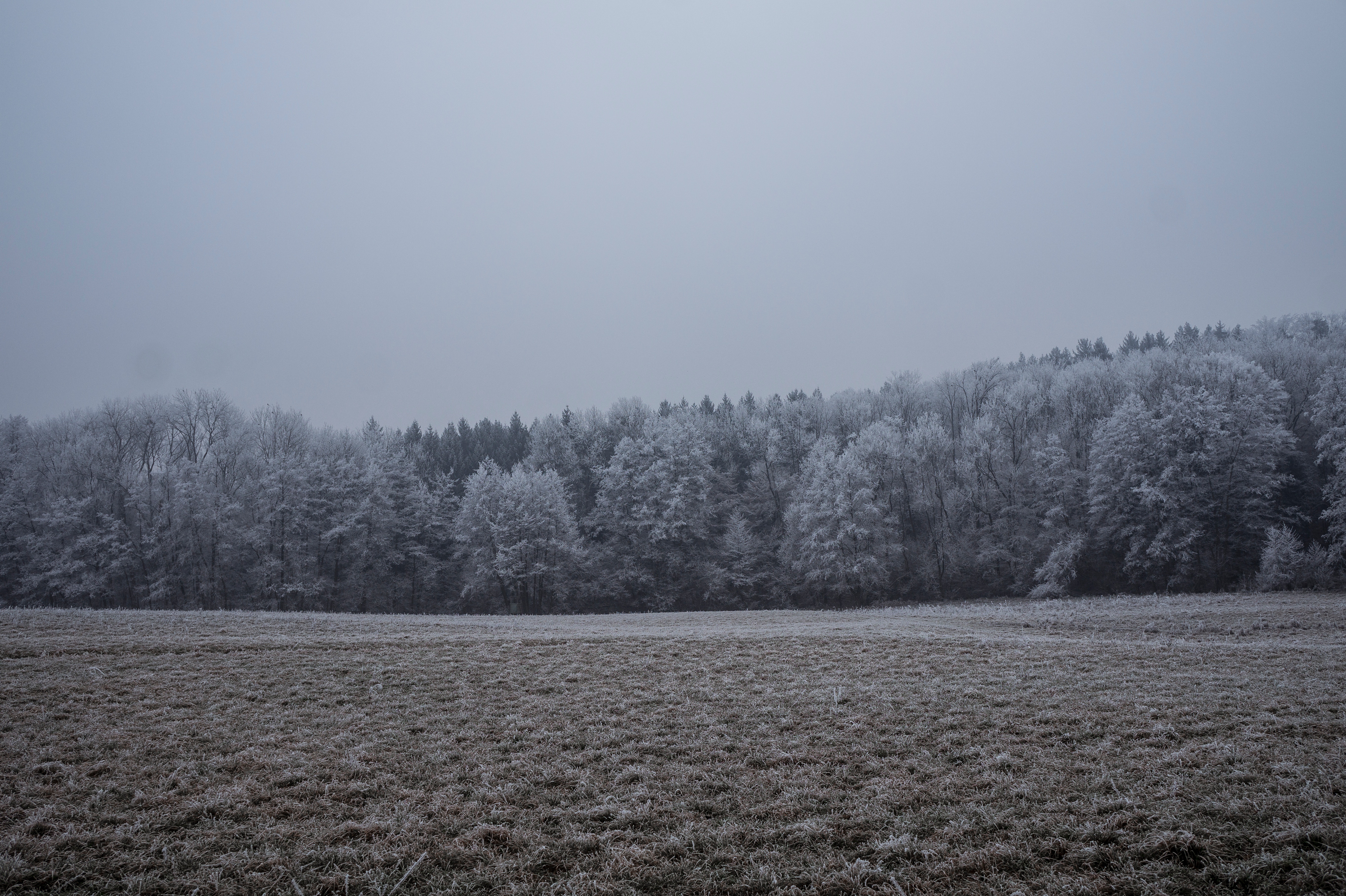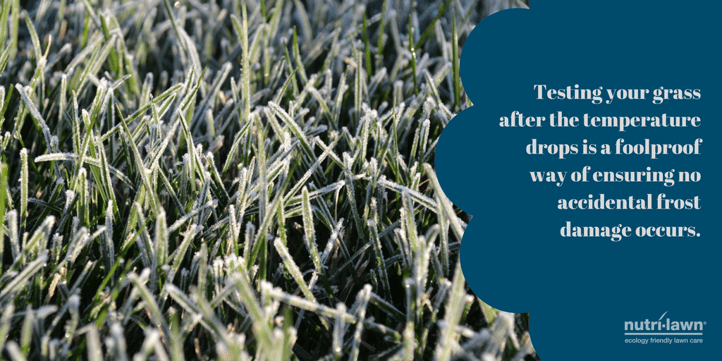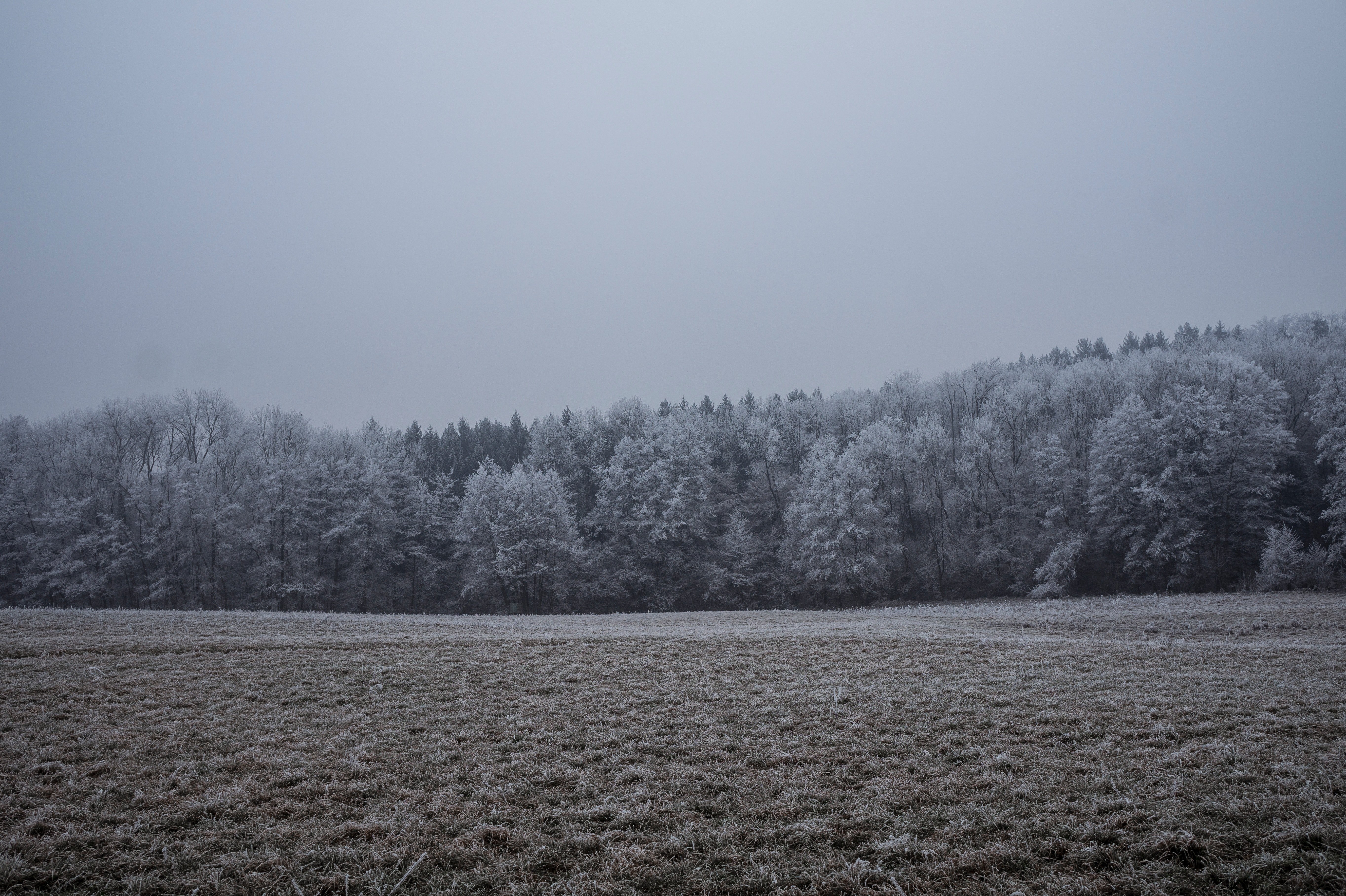
A certain festive holiday is around the corner, and we at Nutri-Lawn couldn't be more excited about it. This year, give your winter lawn the gift of peace and quiet for Christmas by not walking over it when it's covered in frost!
Depending on where you live in Canada, you've probably started to notice some silver frost blanketing your grass and gardens in the early morning and late evening. While it may be pleasing to the eye if caught in the right light, frost can actually be a real problem for your lawn if not properly monitored. Foot traffic, parked cars and snow plows, pets and kids running amok... these are all common but avoidable actions that can damage grass in winter.
A frost-covered lawn should always be stayed off of until the frost has cleared. To learn more about frost damage in the winter, keep on reading!
Facts About Frost
While many theories exist about how frost damages living tissue, the most common belief is that ice crystals damage and kill plant cells when they are forced into the leaf by the weight of a foot or by other means of traffic across a lawn. Science rules!
RELATED > Important DIY Lawn Care Tasks: Part 2
For frost to properly form on grass, many people believe that the temperature must fall to 32°F. However, frost can occur in low lying shaded areas even when the official temperature is above 38°F, so you need to be careful depending on where you live in Canada.
Even if it's not freezing cold outside, frost can still affect your lawn. As a dedicated lawn care enthusiast, you'll need to adjust your winter schedule (including that of your friends and family) accordingly.
Don't Walk Over Your Lawn
Just don't do it! Walking over a lawn that is frost covered can cause significant and unsightly damage to the turf. Damage first appears as a blackening of the leaves, which gradually turns to a brown or tan colour. Frost literally freezes the grass so it becomes rigid, and if walked on will rupture the leafs cells and damage the blades of grass.
Don’t let this happen to your turf, folks. If and when it does get cold enough for frost, be sure to stay off of your frosted grass until the sun melts the frost away. Utilize your pathways, driveways and walkways to get to and from your property, and make sure to guide any rambunctious dogs with a lead when going for a scheduled walk.

Always Test Your Grass
Testing your grass after the temperature drops is a foolproof way of ensuring that no accidental frost damage occurs.
A quick test to determine whether it is safe to walk on the grass is to simply take your hand and wipe it parallel along the surface (tips) of the turf. If your hand stays dry throughout the duration of the test, it is still too soon to walk on the turf. If your hand is wet, then the frost has started to melt and it is safe to walk on.

Follow us on Facebook for more lawn care tips & tricks.








